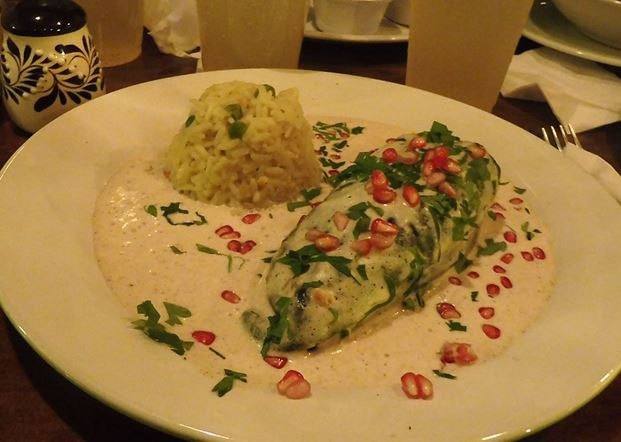Ancient Indigenous Dish In San Miguel De Allende, Mexico
The beautiful San Miguel de Allende (SMA) is a colonial-era city in central Mexico known for its well-preserved baroque Spanish architecture. It is listed as a UNESCO World Heritage Site and was rated "The No. 1 City in the World" by Condé Nast Traveler, defeating trending favorites such as Paris, Rome, and Tokyo. I proudly call SMA my childhood hometown where I lived for over ten years. But when our best kept secret exploded in the media, thousands of travelers from all over the world flocked to witness what the hype was all about. Because SMA is extremely popular with tourists, there has been a proliferation of food-lovers destinations, from street food to gourmet and fine dining restaurants.
On this edition, I am writing about my city with a culinary perspective to feature an ancient indigenous dish that is so complex to make, even the ingredients and cooking methods were challenging to translate from my Spanish interview and restaurant review.
El Itacate Mexican Grill is an authentic Mexican hotspot owned by executive chef Paco Arciniega and restaurant partner Andrea Romay. The word "Itacate" is not in fact Spanish, but Náhuatl, an indigenous Aztec dialect still spoken by the fading population of central Mexico natives. It literally means "wrapped lunch in a handkerchief or basket." From sopa azteca (Aztec soup) to enchiladas, carne asada, and burritos, the menu offers vast choices of traditional Mexican favorites. However, there is one seasonal dish that caught my eye: chile en nogada. It is sort of a cross-breed between a chile relleno and mole poblano, but let me explain.
The base of the dish is a poblano pepper, but the most difficult recipe to master is the sauce. Like mole poblano, it entails an array of herbs and spices, as well as precise boiling methods and timing to reach that perfect consistency and taste. Traditionally, mole is a dark brown chocolate-like sauce poured over boiled chicken, but the chile en nogada sauce is white, fruity, light, and refreshing. The pepper is stuffed with seasoned ground beef mixed with raisins, pine nuts, and chopped parsley, drizzled in the secret family recipe cream sauce, and sprinkled with bright red grenadine seeds. It is a patriotic dish featuring green, white, and red that stays true to the colors of the Mexican flag.
Historically, chile en nogada was popularly served during pre-Hispanic festivities like weddings and banquets. Chef Arciniega went into lengthy detail about the importance of fresh ingredients to reach the peak of the chile en nogada taste. Most of the restaurant ingredients are brought from local farmers and purveyors to ensure the quality and freshness of his culinary masterpieces. It is a colorful architecture of flavors entailing multi-layered assembly and a classy presentation, where sweet meets salty goodness. A seasonal dish only available when the produce is ripe, this is your chance to savor a taste of legendary Mexican history while it lasts.
Leilani Lim-Villegas is the Austin Restaurant Editor for the Daily Meal. She is a food critic who speaks five languages and explores the world to feature top chefs, hidden gems, entertainment hotspots, trending night life, and dishes ranging from street eats to fine dining. She graduated with a Master's degree in Latin American Studies from the University of Texas at Austin, and has a secret obsession with Picanha — a thinly sliced sirloin beef served in Brazilian Churrascaria steakhouses. Follow her travels and culinary journey on Instagram @leilatinasian_atx.
